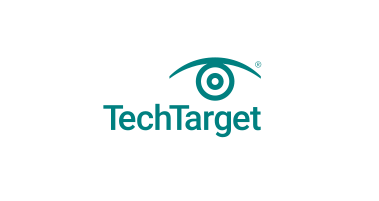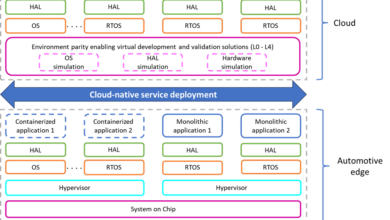What is cloud modernization? Benefits and best practices

What is cloud modernization?
Cloud modernization is a multistep process where existing on-premises applications, infrastructure and data sources are migrated, updated and transformed into a cloud-based architecture and environment.
Why is cloud modernization important?
Simply moving an on-premises application to the cloud — tempting initially from a time and financial viewpoint — fails to take advantage of all the cloud offers. Besides, if the application can be moved to the cloud in the first place, it might not work correctly once it’s there. A proper cloud migration and the accompanying update are required.
What are the benefits of cloud modernization?
Among its many benefits, cloud modernization delivers:
- Increased agility and scalability.
- Improved performance and reliability.
- Lower costs.
- Increased innovation opportunities.
- Enhanced security.
- Real-time analytics.
As one of many examples, on-premises applications are written to operate at a specific level of performance. If demand increases, such as excessive use of a database application, work can slow or degrade due to overtaxed resources. The application cannot scale up to meet demand.
In a cloud-based environment, because of cloud elasticity, more hardware resources can absorb any excessive workload, avoiding performance degradation. Likewise, if demand tapers, the application can scale back resource use, saving energy and money on computing and storage needs.
Types of cloud modernization
There are several cloud modernization strategies to address different migration needs, each with its strengths and weaknesses. Scrutiny of each application is required to determine the optimal strategy for modernization based on a user’s specific needs.
- Replatforming. The most basic form of modernization, replatforming moves an application from its current platform to a new, cloud-based platform. If an application is very simple and requires little change or uses few resources, this can be a good, if limited, option.
- Refactoring. Because most on-premises applications are not written to take advantage of cloud features and services, such as containers and serverless computing, refactoring is a more likely modernization strategy. It involves rewriting an application to make it more cloud-friendly.
- Rearchitecting. The next step beyond refactoring, rearchitecting completely restructures and redesigns an application to be cloud-native. This is a near-complete rewrite of the application, making it the lengthiest and most expensive option. However, this can be necessary with a very old, outdated application that requires modernization.
- Containerization. Ideal for very small, simple applications, containerization packages an application and its OS dependencies into a single, portable unit. Containers are the slimmed-down version of the virtual machine, drastically reducing its memory footprint. It’s not unusual for hundreds of containers to run on a single physical server.
- Serverless computing. The next step down from containerization, serverless computing is a bit of a misnomer. Rather than operating full-time, the server and application run when needed. Then, an ultra-lightweight server is initialized, and the application is loaded. When the job is complete, the application and mini server shut down. This eliminates the need to manage servers and reduces the resources consumed by the server. It is used for the simplest applications, such as those with just one function.
- Multi-cloud. The opposite of containerization and serverless computing, multi-cloud involves applications that span multiple cloud providers or environments, both on-premises and in the cloud. This option addresses very high resource demands and avoids vendor lock-in.
Cloud modernization strategies
Upgrading applications and data to a cloud-first model requires forethought and diligence. There are several steps in the process, including the following:
- Assess and prioritize workloads. Perform a complete inventory of applications and data, then determine their modernization priority, from most to least business critical.
- Choose the right cloud strategy. Refer to the previous section for determining among the different options. Read further for a handful of real-world examples.
- Develop a cloud governance model. Create clear guidelines for cloud resource provisioning and access control, define roles and responsibilities for all activities, and implement security best practices to protect sensitive data.
- Automate deployment and management. Now is the time to move to a DevOps model since it is standard practice for cloud development, along with the use of deployment automation tools.
- Continuously monitor and optimize. Cloud resources fluctuate, so constant monitoring and tracking of applications, as well as updating or modifying according to changing needs, is needed.
Cloud modernization examples
Here are some examples of various cloud modernization projects and their unique solutions:
- A manufacturing company’s supply chain management system is fragmented, data is siloed, and the system lacks real-time visibility into inventory levels and production processes. A cloud-based supply chain management product can span multiple data sources and offer real-time visibility and analytics.
- A retail bank is using an outdated and expensive on-premises IT infrastructure, hindering its ability to scale, speed of innovation and ability to respond quickly to market changes and opportunities. The bank takes its core application to the cloud and builds new services around it, using technologies such as artificial intelligence to serve customers and improve security.
- A healthcare provider finds itself hamstrung by an on-premises legacy system that does not support newer technologies such as electronic medical records for advanced analytics. The provider migrates the system to the cloud. Immediately, cloud-based services like medical records and analytics on patient data are available to provide insight to the provider and patient.
Cloud modernization vs. cloud migration
The terms “cloud modernization” and “cloud migration” are used interchangeably, but they are different processes. A migration involves less effort than a modernization, usually just enough to get the application working in the cloud and take advantage of its benefits. Cloud modernization is far more comprehensive and is nearly a complete rewrite of the application.
Cloud migration is a simpler process that requires less time, fewer resources and less expertise to complete. While a cloud modernization effort takes longer and costs more, it also provides more benefits. The application is far better suited to the cloud, and in the process of modernization, new features may be added, further increasing its utility.
So cloud migration is faster, simpler and cheaper, but cloud modernization delivers better long-term results. Each application must be judged on the benefits of choosing migration or modernization and which is likely to deliver the better return on investment.



